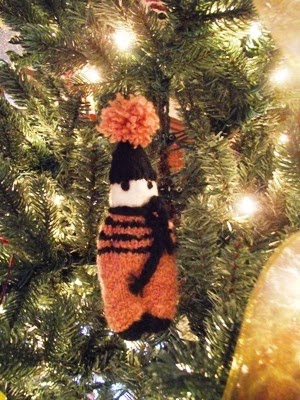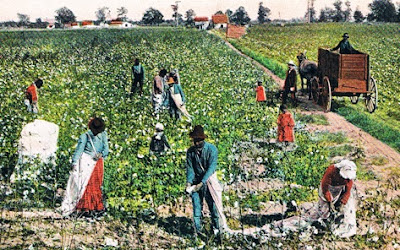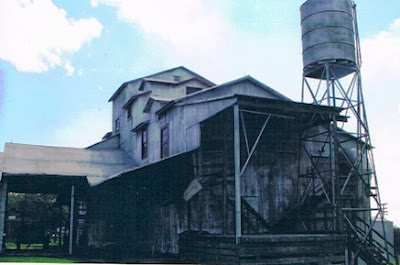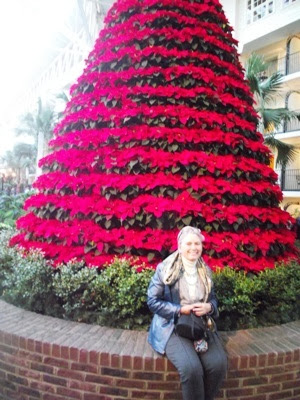(It’s Beginning to Look a Lot Like Christmas written by Meredith Wilson, 1951)
Christmas is the season of gifts. The ultimate gift, of course, is God’s gift of His Son to the world. But on a more plebian level it is a time that we humans take pleasure in giving and receiving gifts. I recall years ago when Mike and I both spent hours on the phone (the internet hadn’t been invented yet) trying to locate Han Solo’s Millennium Falcon for the boys when Star Wars action figures were the “hot toy” one Christmas. Much later, as an adult, Matt commented that he should have kept the Star Wars figures, as they had become worth more as a collectible than they were new. (Hmmm... wonder what will become collectible from his kids' generation?)
There was also the monkey with the velvet jacket. As a kid, I received a stuffed monkey as a gift from my maternal grandparents. The monkey was wearing satin trousers with red suspenders and a black velvet jacket that my grandmother made for him. Years later, my cousin Karen confided to me that she had really wanted that monkey, not the doll that she got from grandma and grandpa that year. It took us a couple of years of looking, but in an antique store in Cape Girardeau, high on a top shelf, Mike did, indeed, find another monkey (Ouch! A toy from my childhood should not be in an antique store…not yet, anyway.) and we gave it to Karen for Christmas several years ago. The monkeys are not exactly alike – Karen’s has a banana in his hand and doesn’t have a black velvet jacket, but, hey, you didn’t think I was going to give her mine, did you? You know I would still have mine. I mean, I love my cousin, but Mr. Monk has been with me for…well, for a very long time.
| My monkey, styling in the outfit that my grandma made for him |
For some households, the aroma of warm freshly baked cookies signals Christmas. Not so at our house. Mom doesn’t bake. (One year she called me and wanted to know if I was “warped” because she never baked cookies. I assured her that if I was warped – and I’m neither confirming nor denying that I am - it had nothing to do with her not making me cookies.) What she does, however, is knits, and she knits beautifully. Indeed, I have a treasure trove of wonderful hand-made ski sweaters. Each year, I receive a “brown paper package tied up with string” containing a new sweater. Mom’s hand-knit sweaters are beautiful, they are warm, and they are a tangible expression of a mother’s love. (And, of course, they are some of my favorite things.) Even as I sit and write this, I’m wearing a sweater knit in a pattern with sheep on the front. Mom made this sweater from the pattern for a sweater owned by Diana, Princess of Wales, at the time she married Prince Charles. I’m burrowed under an afghan knit in a gorgeous aqua shade, and I feel like I’m wrapped in love, because I know that each stitch was created with unconditional love, and I’m warmed inside as well as outside.
| Mom made all of these sweaters. This one is made from the pattern of one of the sweaters owned by Diana, Princess of Wales, when she married Prince Charles |
| Reindeer in a wonderful winter pattern |
 |
| Irish Fisherman's Sweater. Imagine the hours of time and effort that went into creating this piece by hand. |
 |
| The earth and the sky, another hand-knit sweater from my mom |
My dad’s traditional gift to me for a number of years has
been a piece of handcrafted turquoise jewelry.
Years ago, my folks met a Navajo woman at the train station in Albuquerque,
New Mexico, where she was selling her jewelry creations on the station
platform. For many years after that
meeting, dad designed (OK, designed might be too strong a word – let’s say
“envisioned” or “imagined”) a piece of jewelry.
Betty Yellowhorse would craft it out of silver and turquoise and mail it
to him. Over the years, while I was
still teaching, I always wore one of those pieces when I would have to attend a
conference or meeting that had the potential to be difficult or tense. I could simply touch my bracelet or necklace
and feel a sense of calm from the smooth stone.
For no matter how adversarial that moment might be, that piece of
jewelry was more than just silver and turquoise. It was a touchstone that transported me to a
world where I was loved.
December is a gift of love, and I would be remiss not to congratulate my parents on nearly seven decades of love as they celebrate their 65th wedding anniversary this month. They were married on December 18, 1948. Happy anniversary to a couple who are still holding hands after all these years.
| Happy anniversary to my parents, Dorothy and Tracy, still holding hands after 65 years. We love you! |
So, as we travel – and we do love to travel – for me, all roads lead back home at Christmas. From our home to yours, we wish you a blessed Christmas and the hope that 2014 will be your best year yet. We’ll be back in the new year with more Road Stories.
| Home for the Holidays |
 |
| Merry Christmas and Happy New Year from Yvonne, Mike, and Sophie, the little white dog |




































